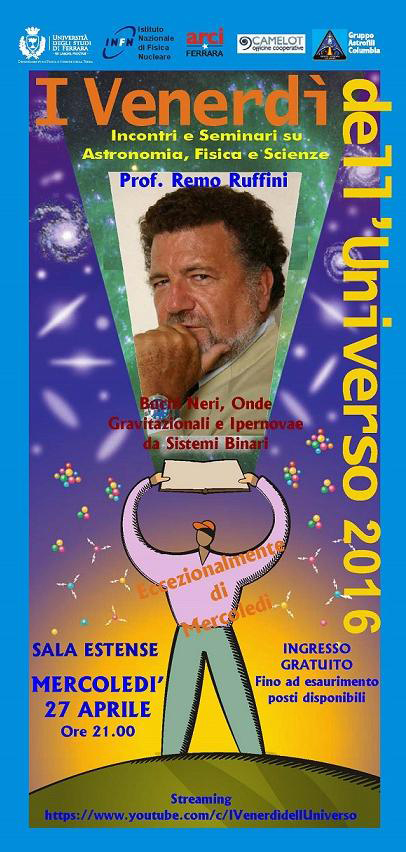

| Newsletter Portuguese February/April |

|

|





ICRANet Newsletter
2014 -
2015
2016 May/June - July/Semptember - October/November - December/January 2017 - 2018 - 2019
ICRANet Boletim informativo
Fevereiro - Abril 2016
SUMÁRIO
1. Reunião do Conselho Administrativo da ICRANet 2. Visita à ICRANet do Vice Ministro da Ciência do Irã 3. Visita do Prof. Ruffini, Diretor da ICRANet, ao ICTP e ao TWAS em Trieste 4. Visita do Prof. Ruffini, Diretor da ICRANet, em Erevan 5. Novos acordos de cooperação 6. Conferência pública do Professor Ruffini em Ferrara 7. "Forth Bego Rencontres" – Escola de Doutorado IRAP PhD Erasmus Mundus 8. "Supernovae, Hypernovae and Binary Driven hyper novae" um Encontro Adriático 9. Canal da ICRANet no YouTube 10. Últimas publicações 11. Novas teses de doutorado e Diploma
1. Reunião do Conselho Administrativo da ICRANet

No dia 1° de fevereiro de 2016 foi realizada a 14a Reunião do Comitê Administrativo da ICRANet. Estavam presentes os seguintes participantes: Prof. Felix Aharonian em nome do prof. Harutyunian Haik A (Representante da Armênia), Secr. Luiz Felipe Czarnobai em nome do Min. Ademar Seabra Da Cruz Junior (Representante do Brasil), Min. Plen. Roberto Cantone (DGSP Representantes do Ministério das Relações Exteriores e da Cooperação Internacional – Itália), prof.a Immacolata Pannone (DGSP Representantes do Ministério das Relações Exteriores e da Cooperação Internacional – Itália), Dr. Antonio Bartolini (Contabilidade Geral do Estado IGAE Uff. IX, Representante do Ministério da Economia), Dra. Giulietta Iorio em nome do Dr. Vincenzo Di Felice (Representante do Ministério da Educação, Universidades e Pesquisa), Prof. Carlo Luciano Bianco através da procuração concedida pelo prof. Remo Ruffini (Representante do ICRA e Diretor do ICRANet), Prof. Xiaohui Fan (Representante da Universidade do Arizona em Tucson), Prof.C. W. Francis Everitt (Presidente - Representante da Universidade Stanford), Eng. Carlo Pace (Representante do município de Pescara em nome doPrefeito, Adv. Marco Alessandrini). Também estavampresentes osAuditores daICRANet:Pres. Ennio Colasanti (Presidente Seção de Controle dos Assuntos Europeus e Internacionais, Tribunal das Contas da Itália), Cons. Dr. Giacinto Dammicco (Conselheiro do Tribunal de Contas da Itália); como suplente: Dr. Piero Redolfi (Consultor Contábil).
2. Visita à ICRANet do Vice Ministro da Ciência do Irã

Da esquerda para a direita: prof. Mansouri, prof. Ruffini, prof. Ahmadi e prof. Rahighi na Universidade Sapienza, em frente ao Departamento de Física. No dia 12 de Março uma delegação composta por representantes do Governo iraniano e cientistas (Prof. Vahid Ahmadi, Prof. Javad Rahighi and Prof. Reza Mansouri) visitou o centro ICRANete se encontrou com o Diretor da ICRANet, Prof. Remo Ruffini. Os objetivos da visita foram a discussão de acordos com distintas universidades iranianas ativas na área da astrofísica relativística, o planejamento de atividades de investigação conjuntas, a admissão de estudantes iranianos noprograma de doutorado internacional em Astrofísica Relativística, o IRAP PhD, bem como a abordagem do assunto da entrada do Irã na ICRANet como estado Membro. Vahid Ahmadi é professor de Engenharia Eletrônica (Optoeletrônica) na Universidade Tarbiat Modares em Teheran: é Vice Ministro de Pesquisa e Tecnologia no Ministério da Ciência, Pesquisa e Tecnologia (MSRT) do Irã. Prof. Javad Rahighi é Diretor do ILSF – Iranian Light Source Facility, Presidente do Comitê Consultivo do SESAME – Synchrotron-Light for Experimental Science in the Middle East, e professor de Física Experimental na Escola de Partículas e Aceleradores do IPM - Institute for Research in Fundamental Sciences em Teerã. Prof. Reza Mansouri (Universidade de Tecnologia Sharif, Teerã, Irã) foi Vice Ministro da Ciência do Irã entre 2001 e 2005, e presidente da Sociedade iraniana de Física. É um dos fundadores do Instituto para os Estudos em Física Teórica e Matemática (IPM); responsável do telescópio nacional iraniano de 3.4 metros (INO340). Recebeu o prêmio Abdus Salam. Visitou o centro ICRANet em Pescara em Junho de 2015 e apresentou a palestra “Do we know what a black hole is? A conceptual refinement" na 14ª Conferência Ítalo-coreana sobre Astrofísica Relativística. 
Da esquerda para a direita: prof. Mansouri, prof. Ahmadi, Dr. Vereshchagin, prof. Rahighi e prof. Ruffini na ICRANet
3. Visita do Prof. Ruffini, Diretor da ICRANet, ao ICTP e ao TWAS em Trieste
No dia 30 de Janeiro de 2016 o Diretor Executivo do TWAS, Prof. Murenzi, visitou o centro ICRANet de Pescara e proferiu palestra sobre "O legado de Abdus Salam e TWAS". Depois desta visita, no dia 16 de fevereiro de 2016 o Diretor da ICRANet, Prof. Remo Ruffini, visitou o ICTP e o TWAS em Trieste e teve uma reunião com o Prof. Chunli Bai, Presidente do TWAS e da Academia Chinesa de Ciências (CAS, da sua sigla em inglês). Debateu-se: a cooperação em curso entre a ICRANet e a CAS, bem como a possibilidade da Universidade da Academia Chinesa de Ciências (UCAS, da sua sigla em inglês) e da Universidade de Ciência e Tecnologia da China (USTC, da sua sigla em inglês) se associarem ao programa IRAP PhD. Ademais, discutiu-se sobre a possibilidade da USTC sediar a 5ª conferência Galileo-Xu Guangqi, que será realizada em 2017. Beijing foi considerada para possível localização da futura Conferência “Marcel Grossmann”, o MG15, a ser realizada em 2018.
A fim de incentivar esta cooperação, foi-se proposto um Memorando de Entendimento. 
4. Visita do diretor da ICRANet, prof. Remo Ruffini, à Erevan
No dia 18 de março o diretor da ICRANet, Prof.Ruffini, visitou o centro da ICRANet em Erevan. Ali ele se encontrou com o Prof. SamvelHaroutiunian, chefe-executivo do Comitê estadual de ciência, o Prof. RadikMartirosyan, presidente da Academia Nacional de Ciências, SatenikAbgarian, do Ministério de Relações Exteriores e nova representante da Armênia na ICRANet, Giovanni Ricciulli, embaixador da Itália na Armênia, e Edson Marinho Duarte Monteiro, embaixador do Brasil na Armênia. Durante os encontros foi-se discutido as atividades da ICRANet não apenas na Armênia, mas também nos países da região. Em particular, as autoridades locais apoiaram a proposta de convidar o Irã para se unir à ICRANet. Após as reuniões, o Prof. Ruffini ministrou um seminário para os pesquisadores e estudantes da ICRANet em Erevan. Ele lhes mostrou também as recentes atividades e descobertas científicas obtidas pela sede ICRANet (Pescara). Como conclusão, foi-se decidido que o grupo ICRANet na Armênia participaria ativamente em vários projetos de pesquisa desenvolvidos na sede ICRANet.

5. Novos acordos de cooperação
Foram assinados recentemente novos e importantes acordos: entre a ICRANet e a UNICAMP, entre a ICRANet e a Universidade de Tecnologia de Sharif e entre a ICRANet e a Universidade de Shiraz.

O Coordenador Geral e Reitor em exercício da UNICAMP, Prof. Alvaro Penteado Costa, em nome do Reitor da UNICAMP, Prof. José Tadeu, e o Diretor da ICRANet, Prof. Remo Ruffini, assinaram o Acordo de Cooperação Acadêmica Internacional entre a UNICAMP, Campinas – SP, Brasil e a ICRANet. Versão do Acordo em inglês e em português. 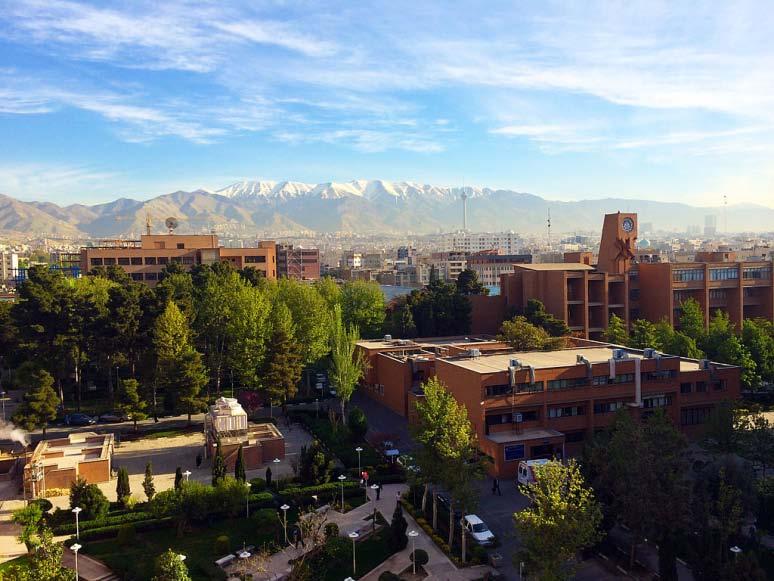
No dia 12 de março de 2016 foi assinado o Protocolo de Cooperação entre a ICRANet e a Universidade de Sharif em Teerã, Irã, pelo Prof. Remo Ruffini, Diretor da ICRANet, e pelo Prof. Mahmoud Fotouhi Firoozabad, Presidente da Universidade de Tecnologia de Sharif.Este acordo terá vigência de cinco anos. Versão em inglês do acordo.. 
No dia 22 de março de 2016 foi assinado o Memoramde de Entendimento entre a ICRANet e a Universidade de Shiraz, em Shiraz, Irã, pelo Prof. Remo Ruffini, Diretor da ICRANet, e pelo Prof. Majeed Ershad-Langroodi, Chanceler da Universidade de Shiraz. Este Acordo terá vigência de cinco anos. Versão em inglês do acordo.
6. Conferência pública do Professor Ruffini em Ferrara
7. "Forth BegoRencontres" –"Quarto Encontro Bego" Escola de Doutorado IRAP PhD Erasmus Mundus
30 de Maio – 3 de Junho de 2016 - Villa Ratti, Nice, França 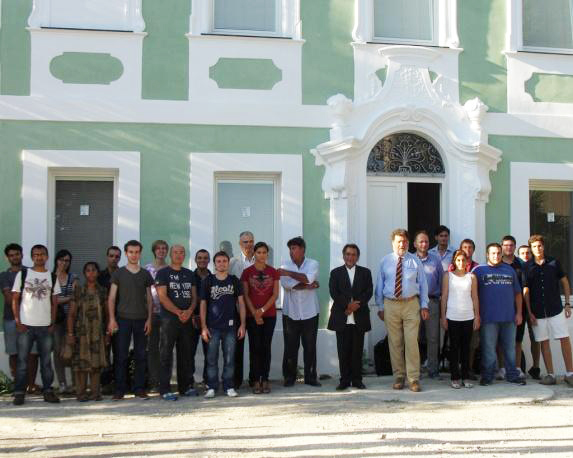
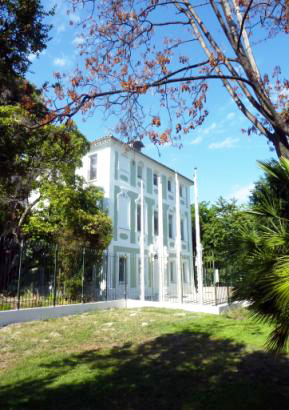
A escola é dedicada ao Prof. Roy Kerr, renomado por ter-se distinguido com o prêmio Crafoord 2016. A escola foi realizada na sede da ICRANet de Villa ratti, em Nice, onde está sediado o IRAP PhD. Relembramos que o IRAP PhD é coordenado pela ICRANet, envolve diferentes universidades e centros de pesquisa e confere umdiploma de Ph.D. conjunto entregue por todas as universidades participantes: Universidade de Bremen (Alemanha), Universidade de Ferrara (Itália), Universidade de Nice "Sophia Antipolis" (França), Universidade de Oldenburd (Alemanha), Universidade “Sapienza” de Roma (Itália) e Universidade de Savóia (França). Durante a escola, ilustres cientistas, como o mesmo Prof. Roy Kerr que detém a cadeira "Yevgeny Mikhajilovic Lifshitz" da ICRANet) apresentaram seminários avançados e os estudantes informaram sobre os resultados das suas teses de doutoramento. A escola é organizada em parceria pela ICRANet e pelo EMJD do IRAP PhD, financiado pela EACEA no âmbito do programa Erasmus Mundus, Número De Referência: 2011-1640.
Diretores:
Prof. Remo Ruffini - Prof. Pascal Chardonnet Faculty: Giovanni Amelino-Camelia, Ulisses Barres de Almeida, Elia Stefano Battistelli, Vladimir Belinski, Carlo Luciano Bianco, Donato Bini, Sandip Kumar Chakrabarti, Pascal Chardonnet, Christian Cherubini, Andreas Eckart, Thibault Damour, Jann Einasto, Sergio Frasca, Filippo Frontera, Jean-Marc Gambaudo, Paolo Giommi, Luis Herrera Cometta, Yipeng Jing, Roy Kerr, Hagen Kleinert, Michael Kramer, Jutta Kunz-Drolshagen, Luca Lamagna, Claus Lämmerzahl, Thierry Lanz, Olivier Legrand, Francois Mignard, Hermann Nicolai, Kjell Rosquist, Jorge Rueda, Remo Ruffini, Felix Ryde, Gregory Vereshchagin, She Sheng Xue, Shuangnan Zhang Secretaria do IRAP PhD: ICRANet staff - Gildas Tchibozo Website
8. "Supernovae, Hypernovae and Binary Driven hypernovae"-"Supernovas, Hipernovas e Hipernovas induzidas por sistemas binários" um Encontro Adriático
De 20 a 30 de Junho de 2016, Sede central da ICRANet em Pescara, Itália 
Ideia do Encontro O encontro científico realizar-se-á na sede central da ICRANet em Pescara, Itália, entre o dia 20 e 30 de Junho deste ano e abrangerá os seguintes temas: atividades de observação dos raios-X, astronomia dos raios gama,raios cósmicos de altíssimas energias (UHECR, da sua sigla em inglês), avanços teóricos na astrofísica relativística das estrelas de nêutrons, buracos negros, e colapso gravitacional e seu papel nas supernovas dos tiposIb/c, hipernovas, hipernovas induzidas por sistemas binários, e suas associações com as explosões cósmicas de raios gama.O encontro cobrirá também aspectos teóricos e observacionais de sistemas progenitores, análises da síntese de populações, e as taxas de ocorrência de tais eventos. Ademais, serão discutidos os diferentes cenários para os eventos de supernova do tipo Ia, e o papel das anãs brancas nos seus mais variados aspectos em tais eventos. Comitê Organizador Internacional Aharonian, F. (DIAS, Irlanda) Arguelles, C. (Universidade Nacional de La Plata e CONICET, Argentina) Belczynski, K. (Universidade de Warsaw, Polônia) Chang, Jin (Observatório da Montanha Roxa, China) Della Valle, M. (Observatório Capodimonte, Itália) Frontera, F. (Universidade de Ferrara, Itália) Fryer, C. (Laboratório Nacional de Los Alamos, EUA) Garcia-Berro, E. (Universidade Politécnica de Catalunha, Espanha) Giommi, P. (ASI, Itália) Gionti, G. (Observatório do Vaticano, Itália) Jing, Yipeng (Universidade Shanghai Jiaotong, China) Jones, S. (Instituto Heidelberg para Estudos Teóricos, Alemanha) Kepler, S. O. (UFRGS, Brasil) Kerr, R. (ICRANet, Nova Zelândia) Kunz-Drolshagen, J. (Universidade de Oldenburg, Alemanha) Laemmerzahl, K. (Universidade de Bremen, Alemanha) Marrocchesi, P.S. (Universidade de Siena, Itália) Mathews, G. (Universidade de NotreDame, EUA) Mavromatos, N. (King’sCollege de Londres, Reino Unido) Mirzoyan, R. (Instituto Max Planck de Física, Alemanha) Nuñez, L. A. (Universidade Industrial de Santander, Colômbia) Penacchioni, A. (Universidade de Siena, Itália) Rueda, J. A. (ICRANet, Itália) Ruffini, R. (Presidente, ICRANet, Itália) Sahakyan, N. (ICRANet-Erevan, Armênia) Tauris, T. (Instituto Astronômico, Universidade de Bonn, Alemanha) Treves, A. (Universidade de Insubria, Itália) Yuan, Yefei (USTC, Hofei, China) Wiggins, B. (Laboratório National de Los Alamos, EUA) Wu, Xuebing (Universidade de Pequim, China) Zhang, Shuannan (IHEP, China) Comitê Local Belinski, V. (ICRANet, Itália) Bianco, C. L. (ICRANet, Itália) Muccino, M. (Universidade de Roma "Sapienza", Itália) Pisani, G. (Universidade de Roma "Sapienza", Itália) Rueda, J. A. (ICRANet, Itália) Ruffini, R. (Presidente, ICRANet, Itália) Vereshchagin, G. (ICRANet, Itália) Xue, S.-S. (ICRANet, Itália) Fim das inscrições: 15 de Maio de 2016 Taxa de inscrição: 200 Euros Contato: secretariat@icranet.org Website: http://www.icranet.org/am
9. O canal da ICRANet no YouTube
10. Recent publications
Ruffini, R.; Vereshchagin, G. V.; Xue, S.-S., "Cosmic absorption of ultra high energy particles", Astrophysics and Space Science, Volume 361, article id. #82, (2016) 11 pp.
11. New Ph.D Thesis discussion and Diploma
Fernanda Gomes Oliveira, "X, gamma-ray and gravitational wave emission from short and long GRBs and their detection rates", defended on 24th February, 2016 at the University of Rome Sapienza.
Commission members: Roberto Capuzzo Dolcetta (Sapienza University of Rome, Italy), Massimo Della Valle (Osservatorio Astronomico di Capodimonte, Italy), Jose Carlos Neves de Araujo (Instituto Nacional de Pesquisas Espaciais, Brazil)
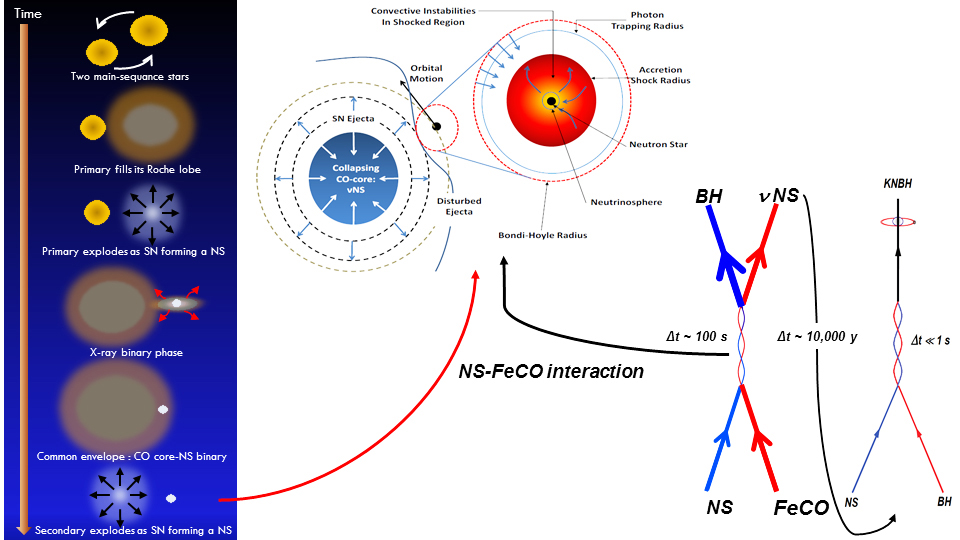
Besides the above astrophysical significance extracted from the X and gamma-ray observations of gamma-ray bursts (GRBs), coalescing NS-NS and NS-BH binaries are, in principle, promising astrophysical sources to produce gravitational wave (GW) signals detectable by the second generation of interferometric detectors, e.g. advanced LIGO (aLIGO). This thesis describes the final stages of evolution of a compact binary system as follows: (a) NS-NS and NS-BH binaries shrink their orbits via GW emission until the point of contact and merger; (b) formation of post-merger object and; (c) consequent emission of a short GRB. It is computed the GW emission in the spiraling-in phase of the binary system up to the merger, and a comparison between the classic nonrelativistic test-mass limit approximation and the relativistic approximation using the effective-one-body (EOB) formalism is made. The fate of the post-merger object from a NS-NS merger, namely massive NS or BH formation, on the basis of baryon mass and angular momentum conservation and evaluating the stability of the post-merger core with respect to the mass-shedding and the secular axisymmetric instabilities. A classification of short GRBs depending on the outcome of the NS-NS mergers is presented and an analysis of the cases of GRB 090227B, GRB 140619B and GRB 090510 is also shown. It is computed the expected baryon load from NS-NS mergers as the baryonic matter coming from the outer layers of the NSs and that is ejected during the coalescence process. The formation scenario for NS-BH binary systems based on binary-driven hypernovae (BdHNe) following the induced gravitational collapse (IGC) paradigm is presented. This thesis advances the possibility of producing a new class of GRBs, ultrashort GRBs, from the merger of such NS-BH binaries. It is presented the rate of occurrence of the different sub-classes of GRBs according with observational and theoretical properties. The thesis concludes with an estimate of the detectability by aLIGO of the GW emission of NS-NS and NS-BH binaries progenitors of GRBs and finally their GW detection rates. The figure illustrates the scenario for the NS-BH binaries produced by BdHNe.
List of publications: 1. R. Ruffini, J. A. Rueda, M. Muccino and et. al, "On the rate and on the gravitational wave emission of short and long GRBs", submitted to Phys. Rev. Lett., 2016. 2. R. Ruffini, J. A. Rueda, M. Muccino and et. al, "On the rate and nature of short and long GRB“, submitted to ApJ, 2015. 3. F. G. Oliveira, J. A. Rueda, R. Ruffini, "Gravitational Waves versus X-Ray and Gamma-Ray Emission in a Short Gamma-Ray Burst", ApJ, 787:150, 2014. DOI: 10.1088/0004-637X/787/2/150. 4. R. Ruffini, M. Muccino, M. Kovacevic, F. G. Oliveira, J. A. Rueda, C. L. Bianco, M. Enderli, A. V. Penacchioni, G. B. Pisani, Y. Wang, and E. Zaninoni, "GRB 140619B: a short GRB from a binary neutron stars merger leading to the black hole formation", ApJ,808:2 2015. 5. C. L. Fryer, F. G. Oliveira, J. A. Rueda, and R. Ruffini, On the Neutron Star-Black Hole Binaries Produced by Binary-driven Hypernovae, Phys. Rev. Lett., 115:231102; arXiv:1505.02809, 2015. 6. F. G. Oliveira, J. A. Rueda and R. Ruffini, "X, Gamma- rays and Gravitational Waves emission in a Short Gamma-ray Burst", Gravitational Wave Astrophysics, proceeding of the 3rd Session of the Sant Cugat Forum on Astrophysics, 2015. 7. Oliveira, F. G., J. A. Rueda and R. Ruffini, "Gravitational Waves Emission from the Short Gamma-Ray Burst 090227B", pp.390-392. Nonlinear phenomena in complex systems. An Interdisciplinary Journal, 17:4, 2014. 8. M. Muccino, R. Ruffini, M. Kovacevic, F. G. Oliveira, J. A. Rueda, C. L. Bianco, M. Enderli, A. V. Penacchioni, G. B. Pisani, Y. Wang, and E. Zaninoni, "GRB 140619B: a short GRB from a neutron star merger leading to the black hole formation", proceeding of Swift: 10 Years of Discovery, 2014. 9. L. Becerra, C. L. Bianco, F. Cipolletta, M. Enderli, C. L. Fryer and et. al., "Black holes, Neutrons Stars and Supernovae within the Induced Gravitational Collapse Paradigm for GRBs", Proceedings of the 2nd Cesar Lattes meeting, AIP Conference Proceedings, 2015. 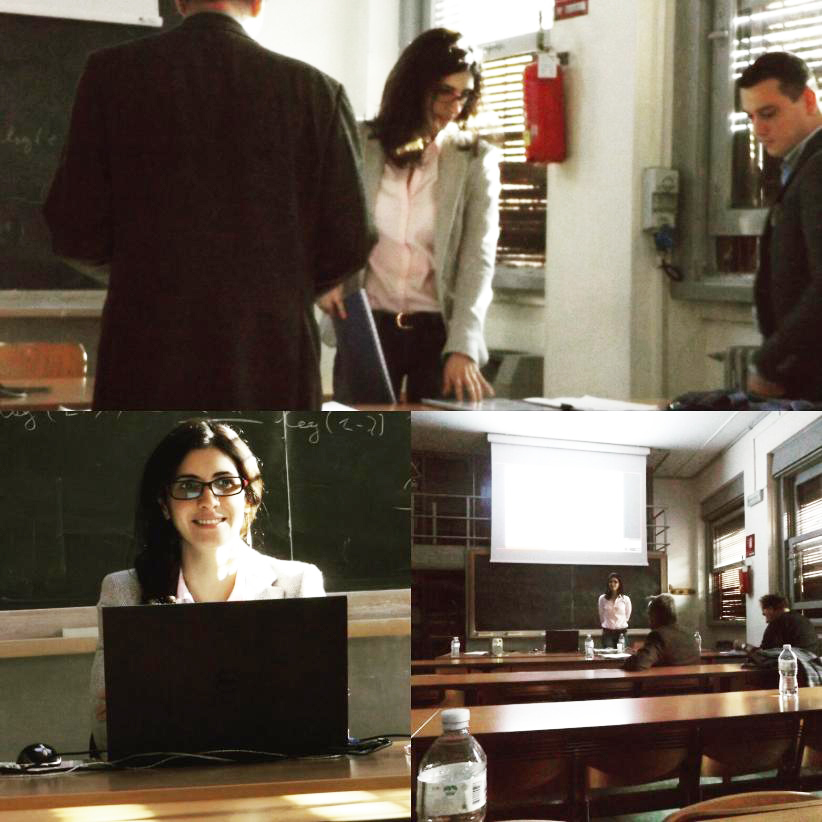
Federico Cipolletta, "Structure of rotating self-gravitating figures of equilibrium in Newtonian gravity and general relativity with an emphasis on neutron stars", defended on 22nd March, 2016 at the University of Rome Sapienza.
Commission members: Roberto Capuzzo Dolcetta (Sapienza University of Rome, Italy), Aldo Treves (Università degli Studi dell'Insubria, Italy), Volker Perlick (University of Bremen, Germany)
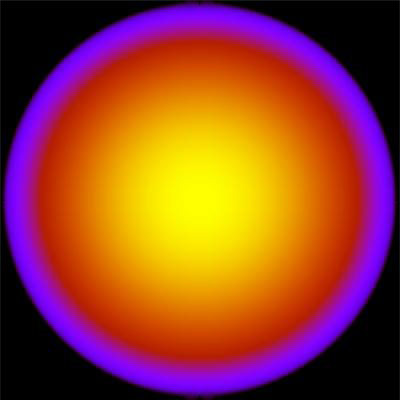
The thesis start introducing the problem of equilibrium of rotating stars from a classical point of view and the numerical methods to solve the equilibrium equations, focusing on the method developed by Eriguchi and Muller (1985) in the case of polytropic equation of state (EOS). The thesis present results of computations performed with a new code produced in the thesis, based on the above method, and in the case of uniform rotation there is a comparison of the code performance with the already known results in the literature. The code allows also the introduction of differential rotation and reproduces the results of Eriguchi and Muller. Results for a multi-parametric differential rotation law, where the angular velocity is a function of the distance from the axes of rotation (cylindrical radius) and of two free parameters, are also shown. The shape and structure of configurations as a function of the parameters are presented. Then, the thesis focus on the same equilibrium problem in general relativity and takes as an example the case of neutron stars (NSs). It is presented the method by Stergioulas and Friedmann and the results for rapidly rotating NSs, from computations performed with the public code RNS by Stergioulas are shown. The implications on both the internal structure of stars and exterior spacetime are presented. The mass, equatorial and polar radii, eccentricity, moment of inertia, and angular momentum are presented as a function of the central density and rotation angular velocity of the NS for a variety of modern EOS based on relativistic mean-field theory nuclear models. The limits of the stability, namely the Keplerian mass-shedding limit and the secular instability limit are computed. Fitting formulas for physical quantities of NSs such the binding energy and the maximum stable mass are presented. The mass quadrupole moment of a rapidly rotating NSs is also computed. The thesis ends with a study of the stable circular orbits of particles around rotating NSs and show fitting formulas for the binding energy and angular momentum of the last stable orbit, as well as a fitting formula for the minimum NS mass for which such a last stable orbit lies outside the NS surface. In the appendix it can be found the code in language C to build numerical models of rotating polytropic stars in Newtonian gravity, taking into account a two parameters differential rotation law. The figure illustrates the isodensity contours of a NS, taken from the Kaleidoscope section of Physical Review D, see http://journals.aps.org/prd/kaleidoscope/prd/92/2/023007.
List of publications: 1. Cipolletta, F.; Cherubini, C. ; Filippi, S.; Rueda, J. A.; Ruffini, R., "Fast rotating neutron stars with realistic nuclear matter equation of state", 2015, Phys. Rev. D, 023007, 92; 2. Becerra, L.; Cipolletta, F.; Fryer, Chris L.; Rueda, Jorge A.; Ruffini, Remo, "Angular Momentum Role in the Hypercritical Accretion of Binary-driven Hypernovae", 2015, ApJ, 100, 812; 3. Cipolletta, F.; Cherubini, C. ; Filippi, S.; Rueda, J. A.; Ruffini, R., "Fast Rotating Neutron Stars with Realistic Nuclear Matter Equation of State", Proceeding of the second Cesar-Lattes metting 2014; 4. Becerra, L.; Cipolletta, F.; Fryer, Chris L.; Rueda, Jorge A.; Ruffini, Remo, "Angular Momentum Transfer During the Hypercritical Accretion in Binary Driven Hypernovae", Proceeding of the second Cesar-Lattes metting 2014; 5. Cipolletta, F.; Cherubini, C. ; Filippi, S.; Rueda, J. A.; Ruffini, R., "Structure and Stability For Realistic Rapidly Rotating NS: Full GR Treatment", Proceeding of XIV Marcel Grossman metting 2015.
Hendrik Ludwig, "The Dynamics of Multi-Component Charged Fluids - Strong fields from heavy atoms to gravitational collapse", defended on 29th February, 2016 at the University of Rome "la Sapienza"
Commission members: Andrea Pelissetto (Sapienza University of Rome, Italy), Antonino Di Piazza (Max Planck Institute for Nuclear Physics), Karen Z. Hatsagortsyan (Max Planck Institute for Nuclear Physics)
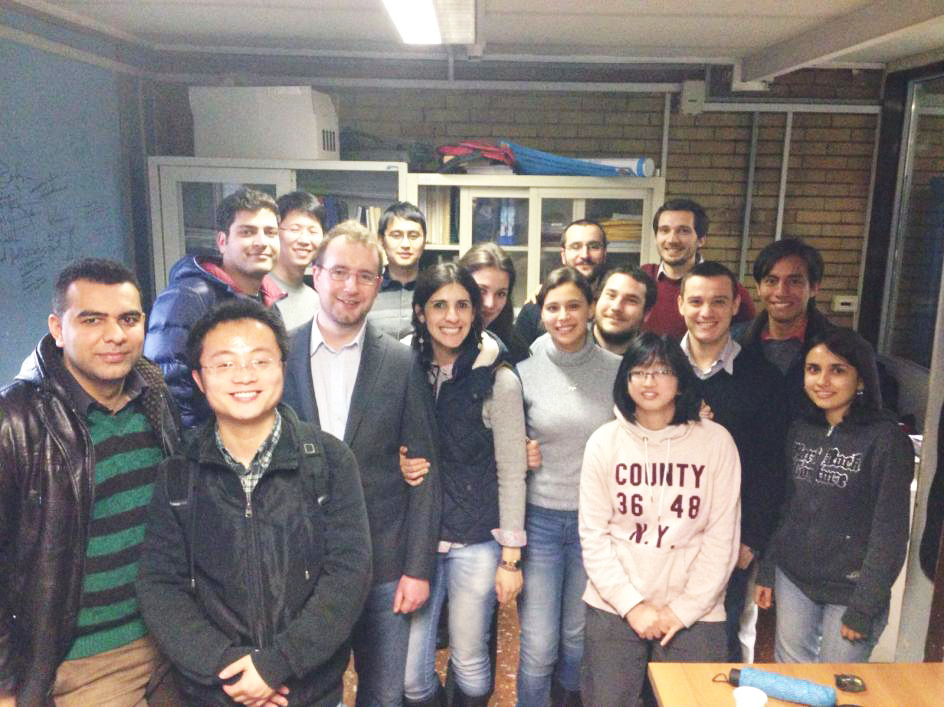
The thesis presents a study of electric pulsation modes of two-fluid systems: a positive charged fluid (proton and neutron fluid) and a negative charged fluid (electron fluid) at/above nuclear density. In the compressed heavy atom cases, the spectrum and eigenfunctions of electric pulsation modes are obtained, as well as other interesting properties such as an overcritical pulsating electric field. Part of these new and important results has already been published in Nucl. Phys. A.
It was then attempted to apply these results to the gravitational collapse processes to see if the pulsating electric field would be able to convert the gravitation energy to electromagnetic energy, which might account for Gamma Ray Bursts. In the on-oscillating case where the electric field is balanced by pressure gradients only, it was shown that the electric field does not reach critical levels during the gravitational collapse. Due to the great difficulties in numerical calculations involving the vast difference of gravitational collapse time scale and electromagnetic timescale (more than 20 orders of magnitude), a definite final result has not yet been achieved for the case involving oscillations. However, several cases and possibilities were studied to give the maximal and minimal values of electric fields which could develop in the gravitational collapse of a neutral stellar core, including an effective analytical treatment of oscillation to avoid the numerical complications. This gives an insight into this difficult problem for future studies, both numerical and analytical approaches. 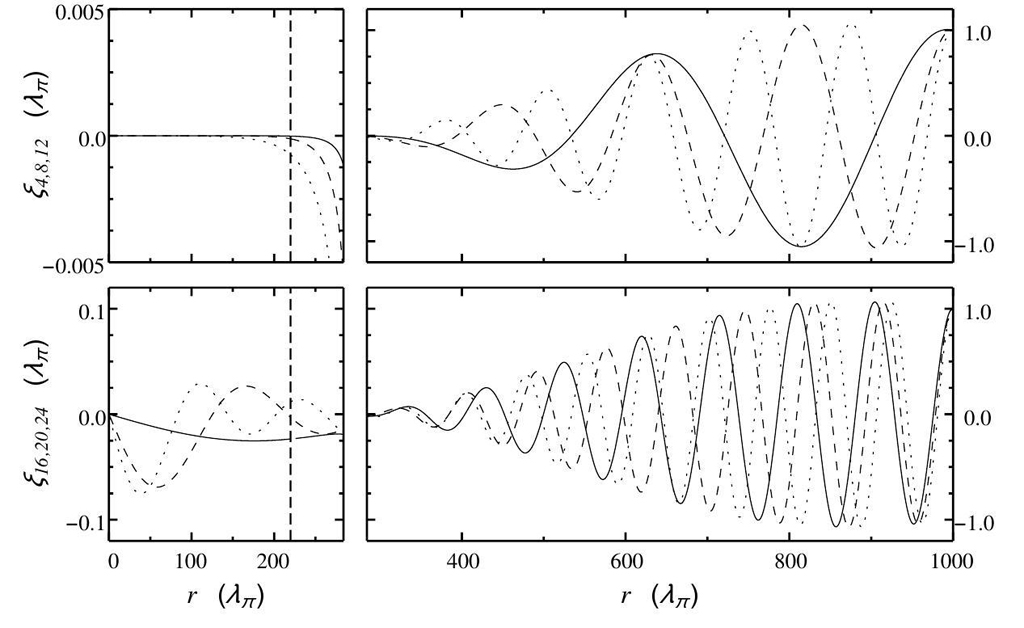
Figure: Electronic oscillation modes below (upper panels) and above (lower panels) the plasma frequency ωplas induced by the positive electric charge of the nucleus. Note that oscillations below ωplas do not penetrate the nucleus (upper left panel), while oscillations above the plasma frequency do penetrate the nucleus (lower left panel). List of publications: 1. H. Ludwig and R. Ruffini, "Gamow's calculation of the neutron star's critical mass revised," J. Korean Phys. Soc., vol. 65, p. 892, 2014. 2. H. Ludwig, R. Ruffini, and S.-S. Xue, "Nucleus Driven Electronic Pulsation," NPCS, vol. 17, p. 384, 2014. 3. H. Ludwig, R. Ruffini, and S.-S. Xue, "Electronic response to nuclear breathing mode," in Proceedings of the Second César Lattes Meeting (P. Chardonnet, U. Barres, and C. A. Z. Vasconcellos, eds.), 2015. 4. H. Ludwig, R. Ruffini, and S.-S. Xue, "Collective electronic pulsation around giant nuclei in the Thomas-Fermi model," Nuc. Phys. A, vol. 941, p. 1, 2015. 5. H. Ludwig, O. Minazzoli, and S. Capozziello, "Merging matter and geometry in the same Lagrangian," Phys. Lett. B, vol. 751, p. 576, 2015. |
|||||
|
||
